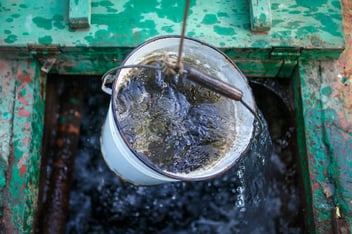620 million children lack access to decent toilets: WaterAid
For the majority of Australian school children, a trip to the toilet is a non-event. But for the 620 million children across the world who lack access to decent sanitation, it can be a life or death situation.
According to WaterAid’s latest report, The Crisis in the Classroom, released ahead of World Toilet Day, one in five primary schools and one in eight secondary schools globally do not have any toilets.
For the children who attend these schools, it’s normal to run home during breaks, use bushes on school grounds, or miss school entirely because they’re sick or menstruating.
A lack of access to proper sanitation is more than an inconvenience. Diarrhoea and intestinal infections kill nearly 140,000 children aged between five and 14 each year. Another 289,000 children die from illnesses related to dirty water and poor sanitation before they are even old enough to start school.
Then there are the safety issues. The South African government recently pledged to put decent toilets in all state schools within two years, after two children, including a five-year-old girl, drowned in pit toilets at their schools.
Closer to home, the proportion of people in Papua New Guinea with decent toilets at both home and school is decreasing. Australia’s closest geographical neighbour suffers from 220 child deaths each year due to water and sanitation-related diarrhoea, and polio – a waterborne disease – recently returned to the island after being eradicated in 2000.
WaterAid Australia Chief Executive Rosie Wheen said a lack of access to safe toilets at home and school impacts on children's health, education and safety.
“Every child should be able to go to the toilet safely and with dignity, whether they are at school or home,” Wheen said.
“Bringing safe toilets to the one in three schools worldwide with no adequate toilets should be a top priority, along with bringing decent household toilets to the 2.3 billion people still waiting.”
Lack of access at home and school
The WaterAid report, based on data from 101 countries, found Guinea-Bissau on the coast of West Africa is the place where schools are least likely to have decent toilets. There, 80% of schools lack adequate facilities.
Niger, Comoros, the Solomon Islands, and Mauritania make up the rest of the top five on the unenviable list.
The problem isn’t confined to schools. In Madagascar, 31% of schools don’t have any functioning toilets, and only 10% of people have basic sanitation at home.
Just 24% of schools in Niger have basic toilets and, at the current rate of progress, it will take until 2203 for the entire population to have decent toilets at home.
 WaterAid/Tom Saater.
WaterAid/Tom Saater.
There are also countries where access to toilets is decreasing. In Somalia in 2000, 77.6% of the population lacked at least basic sanitation at home. Fast forward to 2015 and this has increased to 83.8%. In Chad, 90% of people live without basic sanitation, a figure that has remained unchanged since the start of the millennium.
Some countries are making progress. In India, the government has promised a toilet in every home by 2019, through its ‘Clean India’ initiative. Launched in 2014, this US$20 billion project aims to build 100 million toilets in five years.
Things are also improving in Bangladesh, where 59% of schools have basic toilets and more than 40% of people have at least basic sanitation at home. Universal access to decent sanitation is estimated to be achieved by 2052.
More work needed
According to WaterAid, providing children with toilets at school and home, and teaching them about good hygiene, would help prevent deaths from diarrhoea and allow more children to complete primary school.
“A school without basic access to water, decent toilets and good hygiene shouldn’t be called a school,” the report states.
“Education and finance ministers in every country, as well as donors, must recognise the fundamental importance of water, sanitation and hygiene in schools for improving education.
“And they need to invest in these essential services and establish credible plans for achieving universal access within an agreed timeframe.”
The Sustainable Development Goals (SDGs) recognise the importance of access to a safe and hygienic toilet. SDG 6 aims for universal access to safely managed water and sanitation, while SDG 4 – to “ensure inclusive and equitable quality education and promote lifelong learning for all” – includes a target for building and improving school facilities.
However, Wheen said progress toward any of the 17 SDGs would be impossible without a focus on WASH (water, sanitation and hygiene).
“Progress towards any of the UN SDGs will not be possible without clean water, decent toilets and good hygiene,” she said.
“If we are serious about all children and young people, wherever they are, whatever their gender, physical ability or community background, having their right to clean water and sanitation, we must take decisive and inclusive action now.”
Read the report here.
Related podcast:
https://omny.fm/shows/australianwater/dr-nina-hall-on-water-sanitation-and-hygiene

